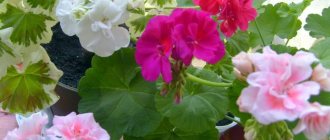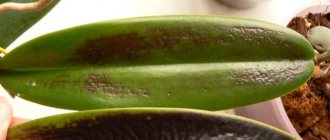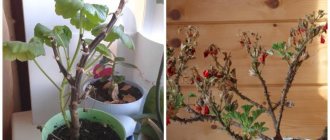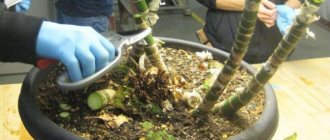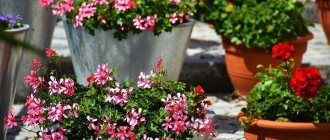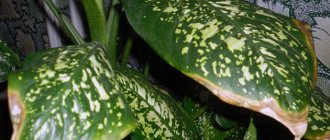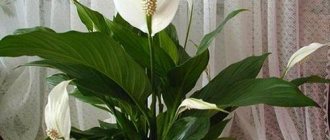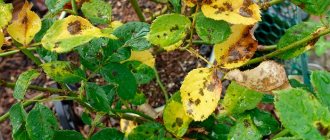Which trees turn red in autumn?
Before listing the trees whose leaves turn red in the fall, let's talk about why this happens.
You probably all know that the leaves are green at the beginning of their life cycle, the reason for which is such an important substance found in plants as chlorophyll.
The production of pigment responsible for photosynthesis is carried out by plants until the temperature conditions allow them to do so, that is, during the summer period. And then autumn comes and gradually begins to get colder.
In some regions, the color of the leaves begins to change already in mid-August, that is, the production process in the leaves begins to gradually stop from this period.
The content of red and yellow pigment in plants is constant, but due to the large amount of chlorophyll, it is difficult for it to “manifest”, and therefore the leaves are green. But when pigment is no longer produced for photosynthesis, the leaves gradually begin to change their color.
Now the trees turn red in some cases and yellow in others. Why is this happening?
According to biologists, the reason for this is a pigment called anthocyanin. Plants mainly produce it in the fall. In the summer, it can be said to be practically absent from the leaves.
Anthocyanins perform the function of protecting leaves from freezing in cold weather and overheating in hot weather. But besides this, it also repels parasites.
In some continents, in the autumn, trees and shrubs turn yellow (Europe may be included), and in others they turn red (America and Asia).
Which trees turn red in autumn?
Typically, trees such as mountain ash, maple, aspen and bird cherry turn red in the fall.
The strongest orange natural dyes
Every housewife has encountered a problem in the kitchen when, for example, after eating beets, her hands turned red. If you grate carrots a lot, the same thing can happen. The color is just not as rich, so it's not as noticeable. Also, after picking a certain flower, you can paint your hands in the corresponding color.
- Natural dyes are widely used in cooking, for dyeing fabrics, in medicine and cosmetology.
- Coloring pigments are produced by bacteria, corals, fungi, algae and plants. Naturally, the corresponding color. Of course, the most accessible are plants.
- You can get them yourself, the main thing is to follow the technology. You also need to know which ingredients are suitable for these purposes.
Orange dyes
Orange dyes:
- carrot
- celandine leaves and flowers
- tangerine and orange zest
- paprika
- onion peel
- pumpkin
As you can see, all products are available and almost all are orange. You can also get this dye by mixing yellow and red colors.
Tree leaves. Making a herbarium
The book “My Herbarium. Leaves of Trees" is a ready-made album for the herbarium. It contains 16 spreads dedicated to 16 trees, the most common in our area. These are birch, maple, chestnut, linden, rowan, poplar, aspen, oak, ash, elm, alder, willow, spruce, pine, larch, apple tree.
By the way, this is the special value of books written by domestic authors: everything here is about our realities. Any tree can be found near your home or in the nearest park.
Each spread of “My Herbarium” contains magnificent illustrations and many interesting details about how a tree works, why it is called that, what leaves, flowers and fruits it has, and what benefits people get from it.
For example, maple. What can you find out about him? For example, the fact that maple trees also have flowers! For many this will be unexpected news. The maple tree is also a symbol of Canada and a source of delicious maple sap from which syrup is made. And maple wood is valued for its clear and beautiful “voice”, which is why musical instruments are often made from it.
And this is an elm. A very common tree, which for some reason few people can recognize and identify right away. And it’s probably a shame for the elm, because it’s so beautiful! And don’t forget to stroke its leaves - they are very velvety on the inside. And – very recognizable! Take a closer look: you see that they are unequal - as if one half of the sheet decided to run away, moved a little, and then changed its mind.
And here is the rowan. Which of us, as a child, did not try its juicy red berries? We tried it and made a face: wow, that’s bitter! But they tried it wrong! It turns out that these berries become sweet after the first frost. I’m making a mental note: be sure to try rowan this winter!
There is a lot of space in the book for gluing leaves. And for good reason! If you collect, for example, leaves of different types of oak or maple, they will all fit on the desired page, and you won’t even have to crowd together.
All “herbarium” pages in the book are covered with tracing paper. This is very convenient for storing dried leaves. You insert the sheet, glue it if you wish, and that’s it, you’re done! Here, for example, is our birch page.
And at the bottom of each page, don’t forget to sign where and when you found this sheet. In the park or on the embankment, near the school or in the yard of your house. At the same time, you will capture the geography of your own walks for the future!
Problem No. 1: redness and falling of the lower leaves
Details. The most common problem situation in which rhododendron foliage begins to turn red is related to feeding. The gardener acidified the soil, using, as it seems to him, the optimal and most effective fertilizers. However, after adding nutrients, the lower foliage of the rhododendron began to acquire a red color. And then it began to fall, quite intensely.
What is the reason? In such a situation, the problem is most likely that the gardener, without knowing it, has acidified the soil too much. It is important to understand that the optimal soil for this plant is acidic and rich in humus. But this does not mean at all that you cannot overdo it in an attempt to acidify insufficiently acidic garden soil. You can, and how! Therefore, fertilizers and the volume of substances applied to the soil must be closely monitored.
Solution to problem #1
To begin with, let's remember a few basic rules that are associated with soil for rhododendron and its feeding. They will help you initially dot the i’s.
- The optimal pH for rhododendron should not exceed 4.5. Anything higher is detrimental to the plant.
- Alkaline soil is absolutely not suitable for seedlings: the plant simply cannot develop in such soil.
- If the soil pH tends to zero, you should not expect the rhododendron to bloom: in such soil it will not please the gardener even with scanty small flowers.
- To plant a rose tree in the ideal soil for it, you need to take two parts of high-moor peat, three parts of leaf soil and one part of pine decline.
If there is no high-moor peat, and instead you have low-lying peat, the latter can be acidified using sphagnum, potassium sulfate or other fertilizers suitable for this purpose.
During the initial planting of rhododendron, the soil prepared for this task is flavored with 100 grams of the “Kemira-universal” preparation in order to create the most optimal growing conditions for the rose tree.
As for proper feeding, you need to understand: the maximum number of such nutritional sessions should not exceed three. It is necessary to use minerals and organic matter for feeding. And before adding substances to the soil, the rhododendron and the soil around it must be saturated with earth. Simply put, water it. If you do not do this, but apply fertilizer immediately, without abundant watering, you run a high risk of burning the root system of a representative of the Heather family.
Lime and compounds containing chlorides are strictly prohibited for feeding rhododendron.
Experts recommend giving preference to natural, natural compositions for feeding. For example, mullein. It is advisable to use it in liquid form. As an option, you can use rotted manure. It is applied directly under the rhododendron, after mixing it with a small amount of country soil. Ready-made mineral compositions are an option for those who are not ready to bother and want to save their time, which is always in short supply. No less relevant for use in the process of growing rosewood are inorganic substances that are characterized by an acidic reaction. Among these are superphosphate and urea.
Rhododendron loves to be watered with lemon water. To do this, add a large spoonful of lemon juice (concentrated or freshly squeezed) to a liter of water and pour two and a half liter jars under the bush.
Which trees turn yellow in autumn? What color are the leaves in the autumn
Autumn is a bright period in nature, when the forest changes the color of its leaves from green to yellow, red and brown in a matter of days.
What explains the riot of colors during the leaf viewing season? Why do some trees turn yellow, others turn red, and then they turn brown.
The explanation lies in the replacement of chlorophyll with other substances: carotenoids and anthocyanins. In summer, trees have a lot of nutrients, but with the arrival of autumn, this supply gradually decreases. With the depletion of reserves, the synthesis of chlorophyll stops. And then other pigments that are present in the leaves, but overlapped by the green color - yellow and orange - become noticeable. These are the same pigments that determine, for example, the color of carrots - carotenoids.
Leaves with red hues are the result of the formation of anthocyanins. These pigments are absent in green leaves. They begin to form in the leaves of some plant species after the disappearance of chlorophyll. Anthocyanins are the same pigments that give radishes, geraniums, roses or cauliflower their color.
The brightness of the color of autumn leaves depends on the weather. Trees wear their most beautiful clothes in sunny, dry weather, at temperatures of 0 – 7 degrees Celsius. If the weather is cloudy and rainy, then the leaves do not burn, but turn into dull yellow shades or even turn brown.
As winter approaches, yellow and red leaves gradually lose their pigments. Brown leaves, which can be seen in late autumn, with the onset of severe cold, after snowfall, are leaves in which there are no pigments left at all, and the cell walls have become noticeable.
Disease and pest control
General rules for controlling apple tree diseases and pests include the following:
- Treatment with anti-annoyance insecticides. Popular insecticides include Fufanon, Nitrafen, Pirimix, etc. The procedure is carried out in the spring. The air temperature should be about 4...6 degrees Celsius. The drugs are dissolved in water. You must act according to the instructions. Spraying is carried out using a special sprinkler. It is important to completely cultivate the apple tree and the ground underneath it.
- The use of remedies that cure apple tree diseases. The most universal: colloidal sulfur, Bordeaux mixture, copper sulfate solution. Infectious drying out is recommended to be treated with copper oxychloride. Bacteriosis is treated with Cumulus, Thiovit Jet. To combat apple scab disease, Ordan and Bronex are used. This disease is afraid of urea. It is applied in the form of a solution to the crown and trunk of the tree. Fruit rot will go away if you spray the apple tree with fungicides Horus, Kurzat, VDG.
- If the tree is severely affected by the disease, and the fight does not bring the desired results, then it is better for the gardener to remove the apple tree. This way you can save other plantings and eliminate the disease completely. The apple tree is cut. The branches are burned. The earth is disinfected with a solution of copper or iron sulfate.
- While fighting diseases and pests, you cannot stop caring for the apple tree. It is watered, fed and pruned in a timely manner. This way the apple tree will have the strength to fight illnesses.
Tree with red leaves in autumn. Trees with red leaves in landscape design
More and more ornamental trees and shrubs have purple and red leaves. They are usually brightest in the spring and darken and become less vibrant in the summer and fall. Some of them, such as peaches and some apple trees, turn red immediately after blooming and then turn completely green. Such bushes and crowns need to be trimmed, because their young shoots look just like flowers against the background of old ones.
Since red pigments increase resistance to the scorching sun and prevent attack by herbivorous insects, it is not surprising that the number of purple and red trees and shrubs used in landscaping is growing rapidly.
Many of them also have other attractive features: an interesting leaf shape, a weeping or spherical crown. Bladderwort, Japanese spirea, elderberry, barberry, cherry and apple trees also bloom and bear fruit beautifully.
For gardens, first of all, it is worth choosing those varieties that grow slowly. Small plants, such as Japanese dwarf spirea and Barberry thunberga 'Bagatelle', are often present in gardens in place of moderately tall perennials. They grow best in full sun - so you can use them as a protective umbrella for more sensitive plant species. They do not grow very well in the shade because they feel a lack of light.
In landscape design, it is better to use red leaf in moderation. The most effective compositions are plants with red leaves in a duet with green-violet or multi-colored trees, including golden or light green variations.
How to treat red dots
How to treat red dots
Why do red and dark spots appear on apple tree leaves? There is a high probability of black cancer appearing. This is a dangerous disease. After some time, the reddish dot turns into a spot that covers the entire leaf. Other signs of the disease: black and purple spots appear on the bark, the bark layer cracks, the wood turns black, and the fruits turn black.
Pear leaves turn red - what to do, how to treat them
Fighting the disease is difficult. Usually a whole range of measures are used. First, all damaged areas are removed. The lesions are cut out without regret. Next, all sections are treated with an antiseptic. It uses a strong mixture of water and manganese or copper sulfate dissolved in water. After the wound, cover it with garden varnish. Next, the entire apple tree is treated with a solution of copper sulfate and an anti-fungal drug. The medicinal composition is poured into the soil under the apple tree.
Important! Black cancer can be cured with regular antibiotics. Streptomycin tablets, which are diluted in warm water, are ideal.
Which trees have yellow leaves in autumn? Which trees have yellow leaves in autumn?
The leaves of trees and other vegetation contain three main pigments: carotene, anthocyanin and the photosynthetic pigment chlorophyll, which absorbs energy from the sun and converts it into food for plants. It is chlorophyll, found in abundance in leaves, that provides foliage with its green color in spring and summer.
There is another substance in the leaves - the plant growth hormone auxin, which controls a special type of cells located at the base of the leaf cuttings - the so-called shedding layer. During growth, auxin prevents it from fully forming and blocks the tiny internal capillaries that connect each leaf to the tree's circulation system, reports https://www.sciencedaily.com/.
However, with the arrival of autumn, cooler and shorter days stop the production of auxin, which stimulates the growth of the shedding layer, and the circulation of water, nutrients and sugars in the leaves is blocked. When this happens, the rapid breakdown of chlorophyll begins, and the leaves turn yellow thanks to carotene. At the same time, anthocyanin provides their orange and reddish shades. In cloudy weather, anthocyanin activity decreases and orange or yellow leaves are more common, but not red foliage.
A group of scientists from the University of North Carolina at Charlotte have found new patterns in the appearance of red and yellow leaves in the fall. The research was led by Emily Habink, who examined different tree species in different areas.
It turned out that red leaves usually appear on trees that grow in poor soil, and yellow leaves on trees that grow in rich soil. It was also found that red leaves make it possible to more efficiently use the nutrients they contain in conditions of their deficiency.
As you know, in the fall the synthesis of the green pigment chlorophyll, necessary for photosynthesis, stops in the leaves. After which the leaves change color and fall off, but before that the tree extracts all the nutrients from them and stores them for the winter. And this is especially important for trees growing in poor soil.
There is an opinion among scientists that the red color of the leaves is given by the anthocyanin pigment, which usually begins to be synthesized just in the fall, when chlorophyll breaks down. However, then it is not clear why trees should waste energy on the synthesis of new pigment in leaves that will soon fall anyway. However, one theory is that the new pigment protects weakened and vulnerable leaves from sunlight, allowing them to last as long as possible so that the tree can extract as many nutrients from them as possible.
Adhering to this theory, Habink tried to confirm or refute it. Through research on red maple and amberwood, she discovered that in higher elevations where the soil is poorer, these trees have much redder leaves than the same species in fertile floodplain areas. Therefore, the findings support the theory that the production of anthocyanins helps the leaves last as long as possible and allows the tree to more efficiently stock up on nutrients for the winter.
How to treat plaque
A whitish, cobweb-like coating may appear on the leaves of the fruit tree. Over time it darkens. This affects the development of the apple tree. Leaves that are covered with plaque dry out and fall off. The same thing happens with branches. Plaque on the leaves is a sure sign of powdery mildew.
It is also necessary to treat plaque or powdery mildew using complex therapy. First, the tree is pruned. Its goal is to remove diseased shoots. Next, the apple tree must be treated with chemicals. Moreover, treatments are carried out 3-5 times a year.
Effective drugs:
- Colloidal sulfur;
- Topaz;
- Fitosporin;
- Impact;
- Copper sulfate;
- Home;
- Topsin.
Varieties of trees. Deciduous trees and shrubs: names and photos
Deciduous trees and shrubs include many varieties. Next you can see photos of deciduous trees, which are often found in gardens in central Russia. We suggest you find out the names of deciduous trees, which can be fruit-bearing and decorative.
HORSE CHESTNUT – AESCULUS
- Flowering time: depends on the species
- Location: best sunny
- Reproduction: acquiring new plants
The common horse chestnut is too large for most gardens. Choose one of the bushy horse chestnuts instead. There is the small-flowered horse chestnut (A. parviflora) 3 m high, blooming with white flowers in July - August, and the pavia horse chestnut (A. pavia) of a similar size, blooming red candle inflorescences in July.
BIRCH – BETULA
- Flowering time: March - April
- Location: sunny or partial shade
- Reproduction: acquiring new plants
A popular tree with bark, most often white in color. Birch trees have a shallow root system - do not plant anything under them. Water during prolonged drought. Weeping Birch (B. pendula) 9 m high is popular - yellowish catkins, white bark, twisting branches. Its form 'Purpurea' has purple leaves and branches.
IRGA – AMELANCHIER
- Flowering time: April - May
- Location: sunny or partial shade
- Reproduction: by rooted offspring in autumn
Copper-red foliage and white flowers in spring, red berries in summer and orange-red leaves in fall. The most popular species is the Canadian Irga (A. canadensis) reaches a height of 6 m. Its star-shaped flowers appear in erect inflorescences, and its berries become black when ripe.
POPLAR – POPULUS
- Location: sunny or partial shade
- Reproduction: acquiring new plants
This tree is not for small gardens. The leaves of T. white or silver (Palba) 10 m high have pubescence on the underside, and the leaves of large-leaved poplar (P candicans) 'Aurea' are variegated. Pyramidal Black Poplar (P nigra) 'Italica' is one of the best trees with a narrow columnar crown shape.
CARYOPTERIS
- Flowering time: September - October
- Location: must be sunny
- Reproduction: by cuttings under glass in summer, woody cuttings in autumn
A rounded border shrub that grows in all types of soils, including chalk. The main species is C. clandonensis, 1 m high. It has gray-green leaves and lavender flowers in terminal inflorescences 10 cm long. The variety 'Kew Blue' has dark blue flowers.
What to do?
If the money tree has healthy and elastic leaf plates and stems, there is no need to do anything. Except when you like a solid green plant. In this case, it is enough to remove the pot from a well-lit place and place it deeper into the room / on another window.
If the plant gets sunburn (the leaves turn red), ulcerated areas and dents appear. Restoration will take a lot of time, and it will not be possible to return the previous decorative effect. You will need to pinch off unsightly leaves and cut cuttings.
If the tree begins to turn red as a result of the soil drying out, it is worth organizing more frequent watering and ensuring that the earthen ball is completely saturated with moisture. In case of severe waterlogging, it is necessary to optimize watering and take into account the needs of the plant when moisturizing.
In some cases, it may be necessary to adjust the conditions for keeping the fat woman:
- Fertilize only with products suitable for cacti and strictly during the growing season;
- choose a more suitable substrate;
- do not place the pot with the plant in a draft;
- change container;
- Be sure to lay a layer of drainage at the bottom of the pot;
- make holes in the container to drain excess moisture.
Trees in autumn description. Sunday walk in the forest in autumn (essay)
Autumn is a wonderful and very surprising time of year! There are trees around with yellowed and half-fallen leaves, and under your feet lies a huge carpet, full of a crazy variety of all bright and rich shades. And it’s even better if such wonderful landscapes are accompanied by the autumn sun, which no longer burns like in summer, but only slightly caresses and warms.
In such weather it would be unforgivable to sit at home; the best thing to do would be to take a walk. And the best day for a walk will be Sunday. A day off when you don’t need to rush or rush anywhere, but can take a measured and sedate walk through the autumn forest.
Such a walk evokes romantic images and is suitable for both a child and an old man. It would be best to take a walk alone to think about life, reflect on your worldview and admire the beauty of nature falling asleep for the winter. It’s still warm, there’s no cold or frost, but a slight chill has already forced people to put on jackets and scarves. The walk will be very captivating and will be remembered for a long time. The sky may not be overcast, but delight with its blueness and small clouds. Migratory birds are already flying south in their schools.
What deep thoughts about life are evoked by autumn nature, painted in different colors. There are so many divine shades here! There is yellow, and orange, and red, and even remnants of green. And all this abundance of flowers, a riot of colors surrounds us on all sides. It is these cozy walks in silence and solitude that will help you relieve stress, focus on something important to yourself, take a break from the bustle of the big city and retire to yourself.
Sunday walks in the forest, of course, can be carried out at any other time of the year, but autumn gives them a special charm and splendor, because autumn is the sunset of nature, which follows its long winter sleep.
Crassula restoration
During recovery, provide your money tree with optimal care. Keep in mind that the damaged plant’s protective properties have been greatly weakened. And in order to survive, the pet needs additional help.
Apply the following methods (they will help return the leaves of the crassula to a beautiful green hue):
- move the pot to a place protected from light so that direct rays of the sun do not fall on the crassula;
- If there is no dimly lit room, cover the windows with gauze or curtains.
If the leaf blades not only turn red, but also intensively crumble, the problem is really serious. In this case, moving the pot to a new location will not be enough. To speed up the recovery of the fatty acid, use biostimulants.
Timely hydration is also important. Do not allow the soil to dry out or become waterlogged. Under normal weather conditions, water the tree more than once every 7 to 10 days. If it is hot outside and indoors, moisturize twice a week.
Problem No. 3: rhododendrons covered for the winter turned brown after removing the cover.
Details. The classic problem is as follows: a gardener purchased rhododendrons, planted them in the ground and provided the exotic plants with a high-quality winter shelter. So that you can survive the cold without stress. Winter is a thing of the past, spring has come, the shelter has been successfully removed. The rhododendrons under the shelter were bright green, and in some places the buds were already swelling. But after literally a day or two, the foliage suddenly turned brown - as if it had simply been burned.
What is the reason? The reason is that after a long stay under winter shelter, the rhododendron cannot be opened immediately. More precisely, you can open it, but you must prevent sunlight from reaching the foliage and stems of the plant. Rhododendron must be shaded for the first time. Why? Because the foliage of the plant is not yet capable of working at full strength. Moreover, not only the foliage, but also the root system. Especially if it was well frozen in winter. Rosewood needs a gentle atmosphere to adapt; there is no need to immediately throw it into the embrasure.
Solution to problem #3
The first thing to do in this situation is to carry out sanitary pruning. All dried foliage must be cut off. The same must be done with flower buds. Then switch to the rhododendron stems: if they are also dry in places, be sure to cut them back to the point where the living green tissue begins. As soon as the pruning is completely completed, provide the rose tree with the shading it now needs, and continue care in the form of regular watering.
If you do everything correctly, and the root system turns out to be intact (this, of course, does not depend on you), then soon those buds of the rhododendron that were sleeping will wake up - and the process of foliage renewal will be irrevocably started. However, the situation can be completely opposite.
If you did everything exactly as we recommended, but did not notice any progress after the gardening work, most likely the reason for the primary browning of the foliage is rotting of the roots. Another reason may be the root system becoming soaked. In both situations, the risk that the plant will die is quite high. To avoid the death of the rose tree, it is necessary to replant. But firstly, this way of solving the problem does not always help. And secondly, the transplant must also be carried out in accordance with all rules and regulations, otherwise the chances of saving the rose tree will be reduced to zero.
- If the soil into which you plan to transplant the rhododendron is clayey and heavy, the planting hole should have a depth of 30 cm. If the soil is not heavy, the hole can be deepened to 40 cm. The width of the pit is 65 cm.
- Fill the hole with soil mixture, purchased or prepared yourself.
- We add fertilizers to the soil, excluding those that contain calcium.
We position the seedling so that the root collar, God forbid, does not end up buried in the ground. It should be flush with the ground line. But first! First, when you remove a seedling from the pot in which it was brought from a garden center or store, the roots need to be soaked, and then manually carefully separate the roots from one another, since during the growth process in a tight space they have compacted and turned into a lump. Root separation must be carried out - this is one of the basic rules for proper planting of a rose tree.
And finally, we note that if a dense crust of dead roots has formed on the surface of the pot in which the rhododendron lived, such roots must either be removed (which is more preferable) or, at a minimum, cut in several places.

